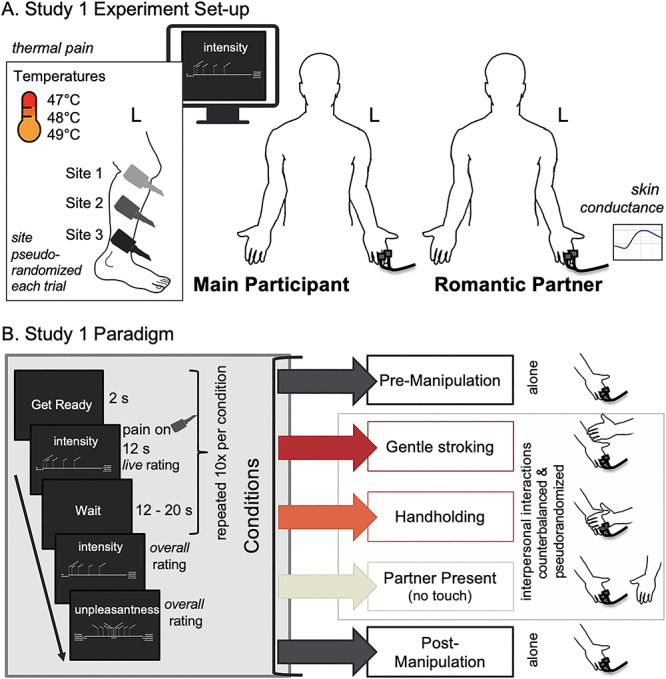Fig. 1.

Method detail. (A) Study 1 Experiment setup. The main participant was positioned in front of the rating computer. EDA electrodes were attached to the fingers of their left hand. Ratings were given with their right hand using a mouse, regardless of subject’s handedness. Three sites of the main participant’s left leg were marked for stimulation. When their romantic partner was in the room, they sat to the main participant’s right and interacted with the main participant’s left hand using their right hand during the touch conditions. EDA electrodes were attached to the left hand of the romantic partner. (B) Study 1 Paradigm. The experiment involved five task conditions. Each condition consisted of 10 trials of painful thermal stimulation delivered in a pseudorandom order to three different sites on the main participant’s left leg. Moment-by-moment pain intensity ratings were collected from the main participant each trial. Overall pain ratings were collected from the main participants at the end of each condition. The first condition was a ‘Pre-manipulation’ condition where the main participant experienced the pain stimulations alone, without their partner present. The presentation order of the next three conditions was stratified so that there were six total orders. These conditions were (a) gentle ‘Stroking,’ (b) ‘Handholding’ and (c) a ‘Present’ condition where the partner was present but did not touch or significantly interact with the main participant. Lastly, the main participant underwent a ‘Post-manipulation’ condition alone.
